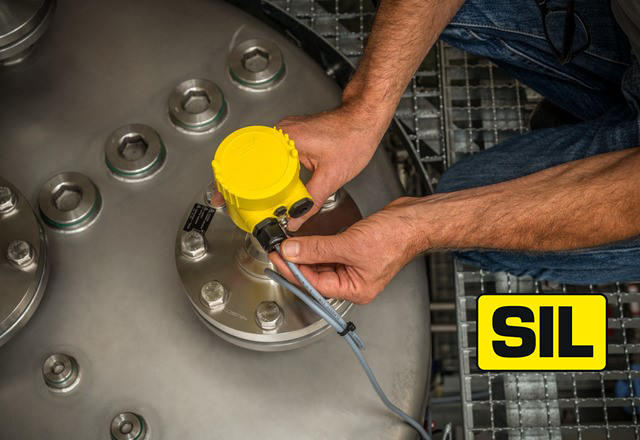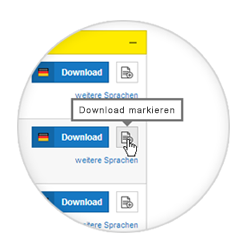How measurement technology is advancing sustainability in the chemical industry
Why does measurement play a key role in the chemical industry?
State-of-the-art sensors monitor processes in real time, provide accurate data on levels, pressures, temperatures and flow rates and thus create the basis for sustainable process optimisation. With level and pressure sensors from VEGA, companies can reduce their consumption of raw materials, minimise waste and pave the way for a circular economy.
How does measurement technology help to conserve resources and reduce waste?
In the chemical industry, waste is often caused by inaccurate process control or faulty batches. Precise, reliable data from process instrumentation can help here. Sensors from VEGA monitor chemical reactions with high accuracy and minimise waste by-products.
One example is the dosing of raw materials: Level sensors measure the exact quantities of material in tanks and prevent overdosing, which wastes raw materials. In reactors, pressure sensors provide real-time data on critical parameters, ensuring that the internal processes are closely controlled. The result: less waste and greater efficiency.
VEGA sensors also make a difference in the storage of raw materials. They help to manage inventory levels, avoid material overflow and reduce losses.
Practical examples of resource conservation
- Pharmaceutical industry: Synthesis processes require maximum precision in order to produce high-purity active ingredients and avoid waste. VEGA sensors monitor these processes and ensure quality.
- Plastics production: Here, sensors ensure that mixing ratios are accurately maintained, thereby avoiding faulty production and thus material waste.
All in all, VEGA sensors promote an increase in efficiency, which generates both economic and ecological benefits.
What advantages does measurement technology offer for hydrogen and CCS technologies?
Hydrogen: Precision and reliability for the energy transition
The use of hydrogen is central to the decarbonisation of the chemical industry and the energy transition. The special properties of hydrogen – such as low density and extreme pressures and temperatures – place high demands on measurement technology.
VEGA sensors, for example radar level transmitters, monitor hydrogen tanks that are operated under high pressure or at temperatures as low as -253 °C. They enable precise control of quantities in storage and are not affected by pressure and temperature fluctuations. Pressure sensors that can measure up to 1000 bar play a central role in the safe handling of compressed or liquefied hydrogen.
VEGA sensors also make an important contribution in electrolysis, the key technology for producing green hydrogen. They monitor critical parameters like pressure and temperature, thus enabling efficient and stable production.
CCS: CO₂ capture for a climate-friendly future
CO₂ capture and storage (CCS) is indispensable for reducing emissions in the chemical industry. VEGA sensors ensure that these processes run safely and efficiently.
- Capture: VEGA sensors monitor the conditions in the facilities that capture CO₂ from exhaust gases and ensure maximum efficiency with their accuracy and reproducibility.
- Transport: When liquefied CO₂ is transported in pipelines, the sensors continuously measure the pressure to detect leaks.
- Storage: When CO₂ is stored in underground caverns or rock formations, the sensors ensure that the greenhouse gas remains safely contained.
How does measurement technology support the closed-loop economy?
Digitalisation in the closed-loop economy
A key aspect of VEGA technology is digitalisation. With the myVEGA portal technicians can analyse measurement data in real time and thus optimise their processes. At the same time, digital integration enables predictive maintenance, which avoids unnecessary downtime and loss of resources.
Digitalisation makes it possible to make material cycles more efficient and transparent. Without reliable data, the circular economy remains a mere vision – with VEGA, it becomes a reality.
Is measurement technology itself sustainable?
A modular design makes it possible to replace defective components instead of the entire instrument. Spare parts remain available for years, and regular maintenance extends the service life of the sensors considerably.
With digital tools such as the digital twin, companies can monitor the condition of their instruments at all times and plan maintenance with specific results in mind. This not only saves costs, but also conserves resources.
Conclusion: Making sustainability measurable
VEGA is setting standards in Industry 4.0 with durable, sustainable and digitally networked products. Today, sustainability in the chemical industry is not just a goal but a measurable reality.
Related industries

Applications
Products
Related posts

Safety at the highest level
Read moreExport this article
Download as PDFShare this article
Comments ({{comments.length}})
{{getCommentAuthor(comment, "Anonymous")}} {{comment.timestamp | date : "dd.MM.yyyy HH:mm" }}
{{comment.comment}}









